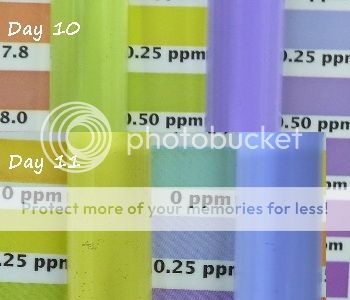I agree with you Daize. The biggest thing that irritates me about this product and others like it is the "cover" they allow themselves for their claims. For example, they claim "By day 5 to 7, you should be able to add 1 drop per gallon and the next day, ammonia and nitrite will be 0." But, if it doesn't work like that, then they hide behind the statements about what might have happened since they shipped it.
Things like TwoTankAmin stated: "Oh yes, lets not forget that the bottle she used started out in California on the USA west coast. We have no idea to what conditions it may have been subjected along the way. It is possible that during the trips until she received it that some of the bacteria did die back which could also slow things down a bit?"
The idea in buying these products based on their claims is that they should have investigated the shipping process and worked out how to make sure that it works - each and every time. It frustrates me that this type of claim is accepted by some. Would you be pleased with a purchase of fish and had this same sort of attitude/apathy towards how the product is treated in transit and storage? Of course not. Shipping "live" bacteria is no different. You are paying for each and every cell of bacteria that is loaded into the bottle, just as you are paying for each individual fish. If half of them die in transit, for whatever reason, that reflects on the company. A fish supplier who sends out fish and half of them die in transit would be a fish supplier that I would never use again. Sending bacteria should be much easier, but that doesn't mean that it should be done willy-nilly. If it costs a bit more to ship in order to ensure that the bacteria arrive to your house in perfect condition, then so be it. Buying a product and then having to be subjected to the roulette wheel of possible bad outcomes is not exactly good practice, in my opinion.
Things like TwoTankAmin stated: "Oh yes, lets not forget that the bottle she used started out in California on the USA west coast. We have no idea to what conditions it may have been subjected along the way. It is possible that during the trips until she received it that some of the bacteria did die back which could also slow things down a bit?"
The idea in buying these products based on their claims is that they should have investigated the shipping process and worked out how to make sure that it works - each and every time. It frustrates me that this type of claim is accepted by some. Would you be pleased with a purchase of fish and had this same sort of attitude/apathy towards how the product is treated in transit and storage? Of course not. Shipping "live" bacteria is no different. You are paying for each and every cell of bacteria that is loaded into the bottle, just as you are paying for each individual fish. If half of them die in transit, for whatever reason, that reflects on the company. A fish supplier who sends out fish and half of them die in transit would be a fish supplier that I would never use again. Sending bacteria should be much easier, but that doesn't mean that it should be done willy-nilly. If it costs a bit more to ship in order to ensure that the bacteria arrive to your house in perfect condition, then so be it. Buying a product and then having to be subjected to the roulette wheel of possible bad outcomes is not exactly good practice, in my opinion.


 /www.barrreport.com/showthread.php/7947-Reference-solutions-for-Ammonia-and-Nitrite
/www.barrreport.com/showthread.php/7947-Reference-solutions-for-Ammonia-and-Nitrite Anyway, post here if you like
Anyway, post here if you like